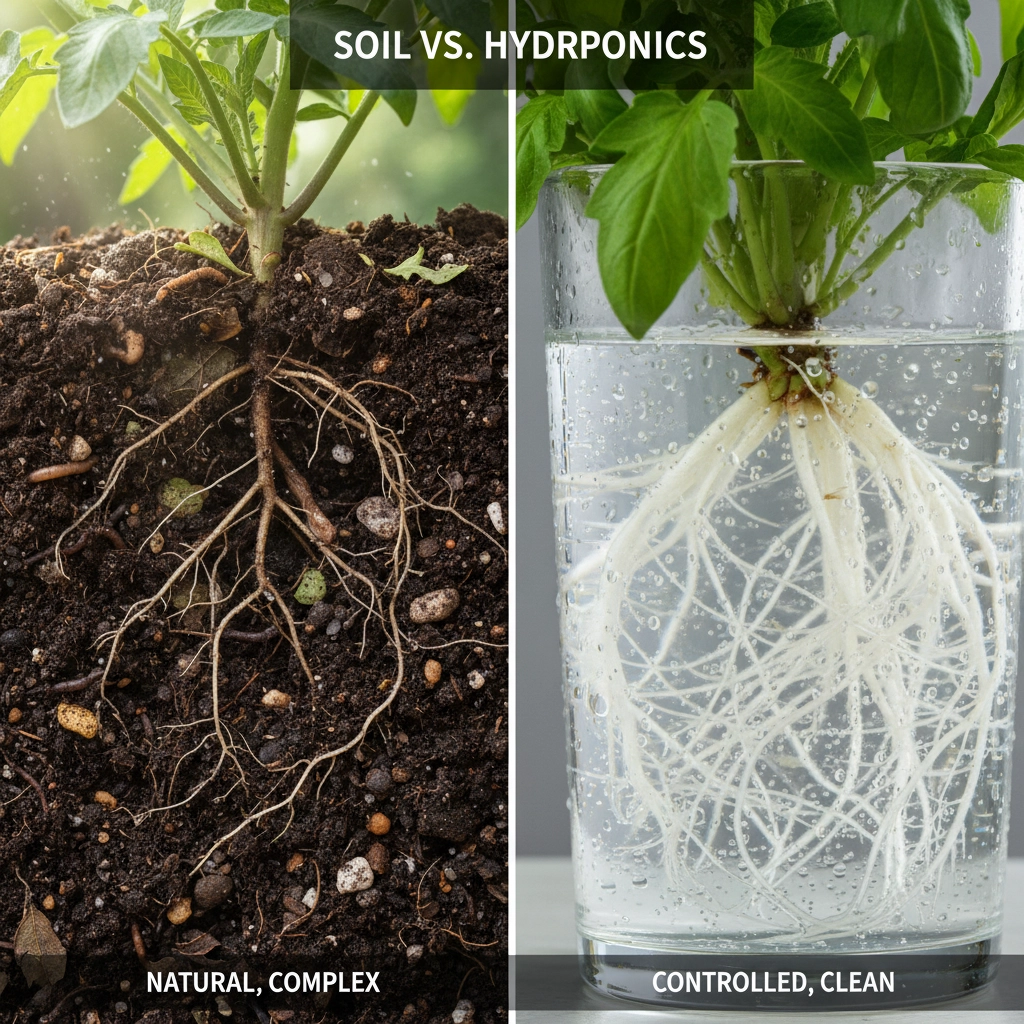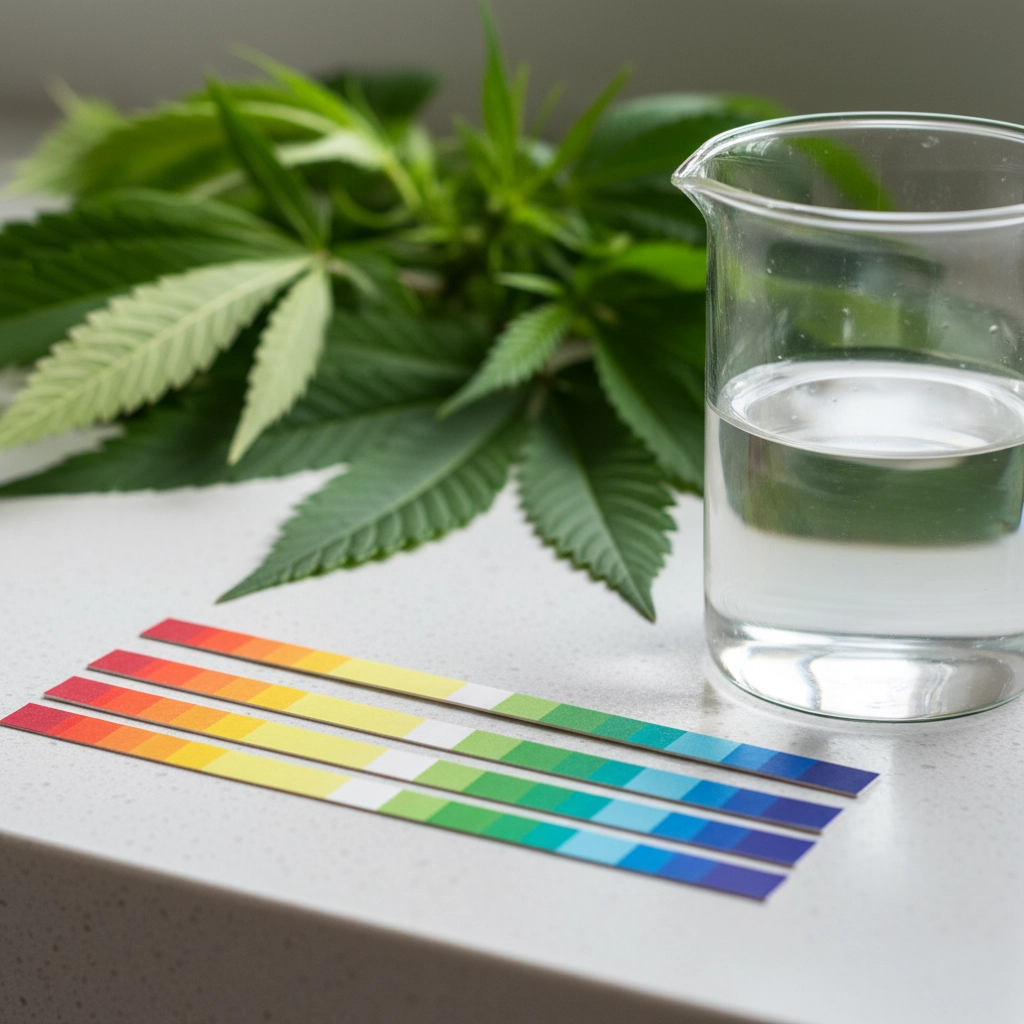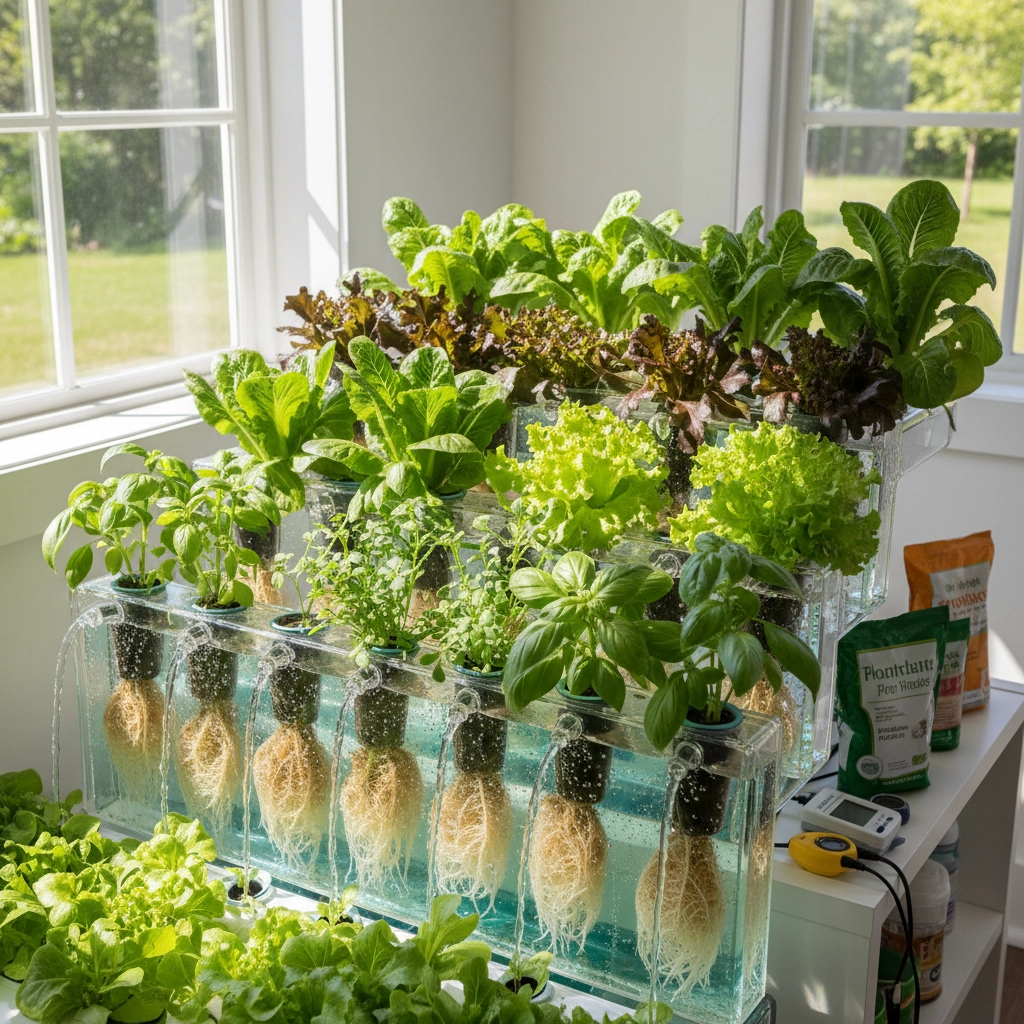Blog
Nutrient Flow: Mastering the Phosphorus Cycle for Thriving Hydroponics
Phosphorus might not get the same attention as nitrogen in hydroponic discussions, but it's absolutely critical for plant health. Without proper phosphorus management, you'll see stunted growth, poor root development, and disappointing yields: no matter how dialed-in your other nutrients are.
Here's the thing: phosphorus behaves completely differently in hydroponic systems compared to traditional soil growing. Understanding these differences and knowing how to optimize phosphorus delivery will make the difference between mediocre harvests and thriving plants that exceed your expectations.
Understanding the Phosphorus Cycle: Soil vs. Hydroponics
In traditional soil-based growing, phosphorus goes through a complex cycle involving mineralization, immobilization, and constant interactions with soil particles. Organic phosphorus gets converted to inorganic forms through microbial activity, while adsorption binds phosphorus to clay surfaces and metal oxides. It's a slow, natural process where phosphorus gradually becomes available through weathering and decomposition.
Hydroponic systems bypass all of this complexity entirely. Instead of waiting for soil processes to release phosphorus, you're providing it directly in water-soluble forms. This gives you incredible precision, but it also means you're responsible for maintaining optimal levels 24/7.
The benefit? No more guessing about soil phosphorus availability. The challenge? You need to actively manage every aspect of phosphorus delivery to keep your plants healthy.

What Phosphorus Actually Does for Your Plants
Phosphorus serves as the backbone for several critical plant functions that directly impact your yields. It participates in ATP formation, basically the energy currency that powers all plant processes. It drives photosynthesis efficiency, contributes to DNA and RNA synthesis, and proves essential for flower and fruit development.
Root development particularly depends on adequate phosphorus levels. Without sufficient phosphorus, you'll see weak, underdeveloped root systems that can't effectively absorb other nutrients. This creates a cascading effect where multiple deficiencies can develop even when your solution contains adequate levels of other nutrients.
During reproductive phases, phosphorus demands increase significantly. Plants need extra phosphorus to support flowering and fruiting, which is why many growers adjust their nutrient formulations based on growth stages.
Recognizing Phosphorus Deficiency Signs
Phosphorus deficiency shows up in distinctive ways that experienced growers learn to spot quickly. The most obvious early sign is dark green or purplish coloration on leaves, particularly on the undersides and along leaf edges. This purple tint occurs because plants can't properly process sugars without adequate phosphorus.
You'll also notice:
- Stunted overall growth and smaller plant size
- Delayed flowering or poor flower/fruit development
- Weak, underdeveloped root systems
- Lower leaves yellowing and dropping prematurely
- Reduced resistance to environmental stress
Cold temperatures and poor water circulation can trigger phosphorus deficiency symptoms even when your solution contains adequate levels. This happens because cold slows nutrient uptake, while poor circulation creates uneven distribution throughout your system.
The pH-Phosphorus Connection
Here's where many hydroponic growers run into trouble: pH levels dramatically impact phosphorus availability. Most plants need pH between 6.0 and 7.0 for optimal phosphorus uptake. Outside this range, phosphorus forms precipitates or complexes with other minerals, effectively locking it away from plant roots.
This is why you can have a nutrient solution that tests high for phosphorus but still see deficiency symptoms. The phosphorus is physically present but chemically unavailable due to pH issues.

Regular pH monitoring becomes absolutely critical for phosphorus management. Daily testing during active growth periods prevents pH drift that could lock up your phosphorus supplies. When pH climbs above 7.5 or drops below 5.5, even perfect phosphorus concentrations become largely useless.
Managing Phosphorus Levels Throughout Growth Stages
Phosphorus requirements change significantly as plants move through different growth phases. During vegetative growth, moderate phosphorus levels support healthy root development and overall plant structure. As plants transition to flowering, phosphorus demands increase substantially.
Balanced nutrient formulations designed specifically for hydroponics account for these changing needs. Generic fertilizers often don't provide the right phosphorus ratios for different growth stages, leading to either deficiency or excess.
For our hydroponic setups, we've found that water conditioning solutions help optimize nutrient uptake by ensuring proper mineral balance. When water quality is optimized, plants can more effectively absorb phosphorus and other nutrients.
Environmental Factors Affecting Phosphorus Uptake
Temperature control plays a bigger role in phosphorus availability than many growers realize. Solution temperatures below 65°F or above 75°F can significantly reduce phosphorus uptake regardless of concentration levels. Cold temperatures slow metabolic processes, while excessive heat can damage root systems.
Water circulation proves equally important. Stagnant areas in your system create localized nutrient imbalances where phosphorus can accumulate or become depleted. Properly sized pumps and strategic placement of air stones ensure even distribution throughout your growing medium.
System design matters for consistent phosphorus delivery. Dead zones where water doesn't circulate effectively become problematic areas where nutrient concentrations vary significantly from your target levels.
Recommended Solutions and Best Practices
Continuous monitoring forms the foundation of successful phosphorus management. Testing nutrient solution strength, pH levels, and individual nutrient concentrations allows you to catch imbalances before they impact plant health.
For reliable phosphorus management, consider these practical steps:
- Test pH daily during active growth periods, adjusting as needed to maintain 6.0-7.0 range
- Monitor solution temperatures and install heating or cooling systems if needed
- Ensure proper circulation with adequately sized pumps and strategic air stone placement
- Use growth-stage specific nutrients rather than one-size-fits-all formulations
- Maintain comprehensive growing records to identify patterns and optimize future grows

Quality nutrient packages specifically designed for hydroponics take much of the guesswork out of phosphorus management. These formulations account for pH interactions, provide appropriate ratios for different growth stages, and include complementary nutrients that enhance phosphorus uptake.
Troubleshooting Common Phosphorus Problems
When you see deficiency symptoms despite adequate phosphorus levels, check these factors first:
- Solution temperature (should be 65-75°F)
- Water circulation and pump function
- pH levels and stability
- Root health and oxygenation
- Interactions with other nutrients
Phosphorus toxicity can also occur if concentrations become excessive. Symptoms include nutrient lockout affecting iron, zinc, and manganese uptake. Plants may show yellowing between leaf veins while maintaining green coloration along veins themselves.
The key is maintaining balance rather than maximizing phosphorus levels. More isn't always better: optimal concentrations support healthy growth while preventing antagonistic interactions with other nutrients.
Building Long-Term Success
Mastering phosphorus management in hydroponics requires consistent attention to detail and systematic approaches. The simplified nutrient dynamics in hydroponics offer both advantages and responsibilities: you gain precise control but must remain vigilant in maintaining optimal conditions.
By understanding how phosphorus behaves differently in water-based systems and implementing proper management protocols, you can ensure your plants receive this essential nutrient in the right amounts at the right times. This attention to detail translates directly into healthier plants, better yields, and more successful growing cycles.
Mark
Perfect Gardens provides comprehensive hydroponic solutions and educational resources to help growers optimize their nutrient management strategies. Visit our complete product collection for specialized nutrients and system components designed for serious hydroponic cultivation.
